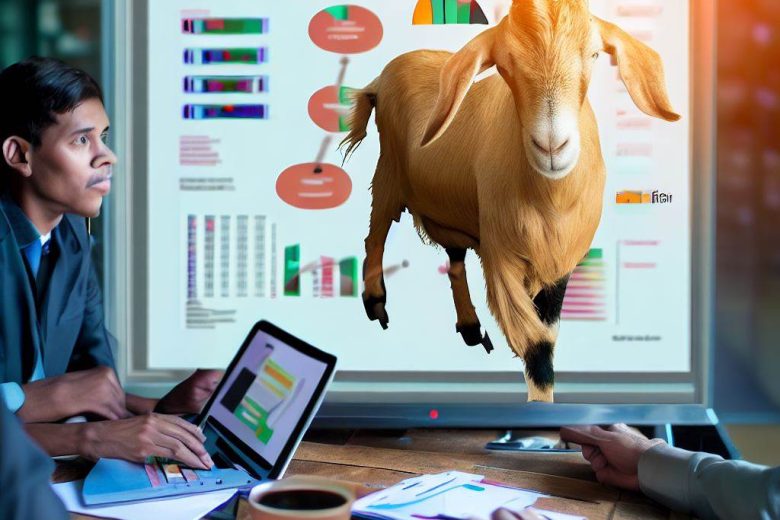Starting a shrimp farming business can be a lucrative venture for individuals looking to enter the aquaculture industry. Shrimp farming involves the breeding and cultivation of shrimps in controlled environments, providing a sustainable source of high-quality seafood.
This article aims to provide a comprehensive guide to developing a successful shrimp farming business plan. From understanding the market to setting up the farm and ensuring profitability, we will cover all the essential aspects to help you embark on this exciting venture.
[Pdf Sample] Shrimp Farming Business Plan Proposal Docx
To write a business plan, here is a breakdown of how it should be structured and what should be in each category. After this instruction, I will provide you with a sample of one I wrote for my farm, let us go:
Read Also: [Pdf Sample] Business Plan For Snail Farming Docx
Executive Summary
The executive summary provides an overview of the shrimp farming business plan, highlighting its key elements, objectives, and financial projections. It serves as an introduction to potential investors and stakeholders, summarizing the business’s potential and highlighting its competitive advantages.
Market Analysis
In this section, we will explore the market dynamics of the shrimp farming industry. We will analyze the demand and supply trends, consumer preferences, and market competition. Understanding the market is crucial for identifying target customers, pricing strategies, and developing effective marketing campaigns.
Read Also: [Pdf Sample] Business Plan For Coconut Farming Docx
Shrimp Farming Techniques
This section delves into the different shrimp farming techniques available. It covers both extensive and intensive farming methods, highlighting their advantages and disadvantages. Factors such as water quality, stocking density, and growth monitoring play a vital role in determining the most suitable technique for your shrimp farm.
Farm Location and Infrastructure
Selecting the right location for your shrimp farm is essential for its success. This section discusses the factors to consider when choosing a farm site, including water source, land availability, proximity to markets, and legal regulations. Additionally, it covers the necessary infrastructure, such as ponds, hatcheries, and processing facilities.
Read Also: [Pdf Sample] Business Plan For Sugarcane Farming Docx
Equipment and Technology
To ensure optimal production and efficiency, investing in appropriate equipment and technology is crucial. This section provides an overview of the essential equipment needed for shrimp farming operations, such as aerators, feeders, water quality monitoring systems, and harvesting tools. It also discusses the latest advancements in shrimp farming technology.
Shrimp Species Selection
Selecting the right shrimp species is crucial for the success of your farm. This section explores different species options, considering factors such as growth rate, disease resistance, and market demand. Understanding the characteristics of each species will help you make an informed decision based on your farming goals and target market.
Read Also: [Pdf Sample] Business Plan For Prawn Farming Docx
Feeding and Nutrition
Proper feeding and nutrition management are essential for healthy shrimp growth. This section discusses various feeding strategies, including formulated diets, natural feeds, and supplementary nutrition. It emphasizes the importance of maintaining a balanced diet to ensure optimal growth, disease resistance, and overall profitability.
Disease Prevention and Management
Shrimp farming is susceptible to various diseases that can severely impact productivity. This section highlights the common diseases affecting shrimps and provides preventive measures and management strategies. Implementing effective disease control practices is crucial for maintaining a healthy and sustainable shrimp farm.
Read Also: [Pdf Sample] Business Plan For Pig Farming Docx
Harvesting and Processing
The harvesting and processing phase is a critical stage in the shrimp farming business. This section covers the best practices for harvesting shrimps, post-harvest handling, and processing techniques. It emphasizes the importance of maintaining product quality and meeting regulatory standards to ensure customer satisfaction and market competitiveness.
Marketing and Distribution
Developing a comprehensive marketing and distribution strategy is essential for reaching potential customers and maximizing sales. This section discusses different marketing channels, such as direct sales, wholesalers, and restaurants. It also explores the importance of branding, packaging, and building relationships with key stakeholders in the seafood industry.
Read Also: [Pdf Sample] Business Plan For Poultry Egg Farming Docx
Financial Projections
Creating detailed financial projections is vital for assessing the viability and profitability of your shrimp farming business. This section guides you through the process of preparing financial statements, including income statements, cash flow projections, and balance sheets. It also highlights key financial ratios and metrics to monitor your farm’s performance.
Risks and Challenges
Like any business, shrimp farming comes with its own set of risks and challenges. This section addresses the potential risks, such as disease outbreaks, market fluctuations, and environmental factors. It provides strategies to mitigate these risks and outlines contingency plans to ensure the long-term sustainability of your shrimp farm.
Read Also: [Pdf Sample] Business Plan For Poultry And Fish Farming Docx
Sustainable Shrimp Farming Practices
Sustainable farming practices are becoming increasingly important in the seafood industry. This section explores environmentally friendly and socially responsible practices that promote the long-term viability of shrimp farming. It discusses topics such as water conservation, waste management, and community engagement.
Here Is The Download Link For Business Plan Proposal For Shrimp Farming By Agrolearner.com
How much capital is required to start a shrimp farming business?
The capital required to start a shrimp farming business can vary depending on various factors such as farm size, location, infrastructure, and equipment. Generally, setting up a small-scale shrimp farm can require an initial investment ranging from a few thousand to tens of thousands of dollars.
This includes expenses for land or lease, construction of ponds or tanks, water supply systems, aerators, feeding equipment, and stocking of shrimp larvae or juveniles. Additionally, operational costs such as feed, labor, utilities, and disease management should be considered. Conducting a thorough feasibility study and business plan will help determine the specific capital requirements for your shrimp farming venture.
What are the common diseases that affect shrimp farming?
Shrimp farming is susceptible to various diseases that can significantly impact the health and productivity of the shrimp population. Some common diseases include:
White Spot Syndrome Virus (WSSV): WSSV is a highly contagious viral disease that causes white spots on shrimp’s exoskeleton and leads to high mortality rates.
Early Mortality Syndrome (EMS) or Acute Hepatopancreatic Necrosis Disease (AHPND): EMS/AHPND is caused by a bacterium called Vibrio parahaemolyticus and can cause mass mortalities within shrimp ponds.
Infectious Hypodermal and Hematopoietic Necrosis Virus (IHHNV): IHHNV is a viral disease that affects the shrimp’s exoskeleton, causing deformities and reduced growth.
Taura Syndrome Virus (TSV): TSV affects the shrimp’s hepatopancreas and can cause high mortality rates, particularly in specific shrimp species.
White Muscle Disease (WMD): WMD is caused by a deficiency in essential nutrients, particularly vitamin E and selenium. It leads to muscle degeneration and reduced growth in shrimp.
Preventive measures such as maintaining good water quality, implementing biosecurity protocols, and proper nutrition management can help minimize the risk of disease outbreaks in shrimp farms. Regular monitoring and early detection of diseases are crucial for effective management and control.
How long does it take for shrimps to reach market size?
The time it takes for shrimps to reach market size can vary depending on the shrimp species, farming conditions, and management practices. In general, it takes approximately 3 to 6 months for shrimps to reach marketable sizes.
For example, the popular Pacific white shrimp (Litopenaeus vannamei) typically reaches market size, which is around 20-30 grams, within 3 to 4 months under optimal conditions. However, slower-growing species like the giant tiger prawn (Penaeus monodon) may require a longer period, usually around 5 to 6 months.
Factors that influence the growth rate of shrimps include water temperature, feed quality, stocking density, and water quality parameters. Providing favorable conditions, balanced nutrition, and regular monitoring of growth indicators are essential to ensure the timely development of shrimps for market sale.
What are the primary export markets for shrimp products?
Shrimp is a highly sought-after seafood commodity, and there are several primary export markets for shrimp products worldwide. Some of the major export markets include:
United States: The United States is one of the largest importers of shrimp, with a significant demand for both raw and processed shrimp products.
European Union: Countries within the European Union, such as Spain, France, the United Kingdom, and Germany, have a substantial market for shrimp products.
Japan: Japan is known for its high consumption of seafood, including shrimp. It imports a considerable volume of shrimp, both for domestic consumption and processing.
China: China has a growing demand for shrimp products, both for its domestic market and as a re-exporter to other countries.
South Korea: South Korea is a significant market for shrimp, especially for value-added and processed shrimp products.
These markets often have specific requirements and regulations related to quality, food safety, and sustainability. Exporting to these markets may involve complying with specific certifications and standards, ensuring traceability, and meeting stringent import regulations.
Are there any government subsidies available for shrimp farmers?
Government subsidies and support programs for shrimp farmers can vary depending on the country and its agricultural policies. In some regions, governments provide financial assistance, incentives, and subsidies to promote the development and sustainability of the aquaculture industry, including shrimp farming.
These subsidies may be in the form of grants, low-interest loans, tax incentives, or assistance for specific activities such as pond construction, infrastructure development, research and development, or disease prevention and control programs.
The availability and eligibility criteria for government subsidies for shrimp farmers differ from country to country. It is advisable for prospective shrimp farmers to consult with local agricultural authorities, fisheries departments, or relevant government agencies to explore the specific subsidies and support programs available in their region.
Conclusion
In conclusion, starting a shrimp farming business requires careful planning, market analysis, and investment in infrastructure and technology. By following the guidelines and strategies outlined in this article, you can develop a comprehensive business plan that sets you on the path to success in the shrimp farming industry.



